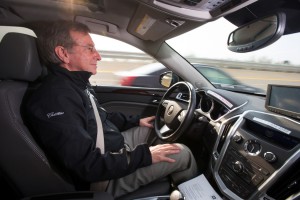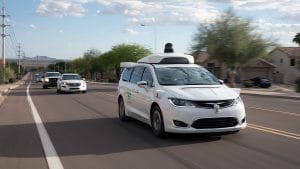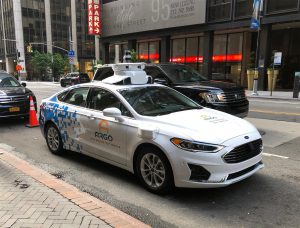
A new IIHS study suggests that self-driving vehicle systems won’t be as effective has they’ve been pitched to be, cutting crashes by only a third.
Automakers have been investing heavily in the development of autonomous vehicles; however, a new study suggests that effort may not produce the benefits expected, claiming self-driving cars will only reduce crashes by a third.
The Insurance Institute for Highway Safety, or IIHS, released the results of the study which says that most crashes involve a complex set of factors that a grouping of cameras, radar, lidar and sensors won’t be able to counteract — at least not better than humans.
Experts say that roughly nine in 10 crashes result from human error and more than 36,000 people are died in U.S. car accidents last year. Proponents of the technology have long maintained that self-driving vehicles are part of our future and will cut down the number of crashes – and by extension fatalities – by numbers exceeding 50 percent.
(Americans remain uncertain about autonomous vehicles, poll shows.)
The IIHS study took a deep dive into the causes of crashes, specifically the “human error” factor and what that really means in a practical sense. The organization reviewed more than 5,000 files and separated the driver-related factors that contributed to the crashes into five categories:
- Sensing and perceiving errors: driver distraction, impeded visibility and failing to recognize hazards before it was too late.
- Predicting errors: misjudging a gap in traffic, incorrectly estimating how fast another vehicle was going or making an incorrect assumption about what another road user was going to do.
- Planning and deciding errors: driving too fast or too slow for the road conditions, driving aggressively or leaving too little following distance from the vehicle ahead.
- Execution and performance errors: inadequate or incorrect evasive maneuvers, overcompensation and other mistakes in controlling the vehicle.
- Incapacitation: impairment due to alcohol or drug use, medical problems or falling asleep at the wheel.
The researchers also determined that some crashes were unavoidable, such as those caused by a vehicle failure like a blowout or broken axle. The researchers analyzed the crashes and determined the driver-related factors contributing to the crash.
(AV testing miles in California jumped 40% in 2019.)
They determined that 24% of the crashes were due sensing and perception errors and 10% were driver incapacitation, which are the only two “categories” they believed that autonomous vehicles would be able to resolve.
But most crashes were the result of more complex errors, such as making wrong assumptions about what other road users were going to do, driving too fast or too slow for road conditions, or making incorrect evasive maneuvers. Many crashes were also a combination of multiple mistakes.
“Building self-driving cars that drive as well as people do is a big challenge in itself,” said IIHS Research Scientist Alexandra Mueller, lead author of the study. “But they’d actually need to be better than that to deliver on the promises we’ve all heard.”
However, the study offers suggestions on how to improve the performance of autonomous vehicles, largely through eliminating some of the other factors contributing to crashes, first and foremost: speed.
(IIHS moving the bar higher for 2020 Top Pick awards.)
In short, the vehicles need to be designed to prioritize obeying traffic laws over the preferences of drivers. With most Americans already not expressing many warm and fuzzy thoughts about self-driving cars, that choice may sway even more away from owning an autonomous vehicle.



Did they estimate how many crashes will be caused by ‘self-driving’ cars?